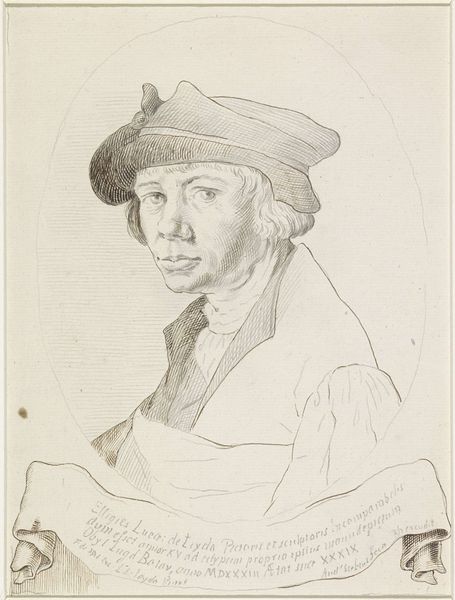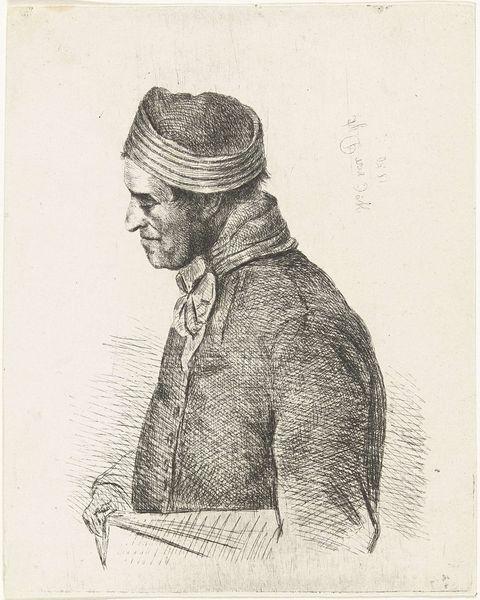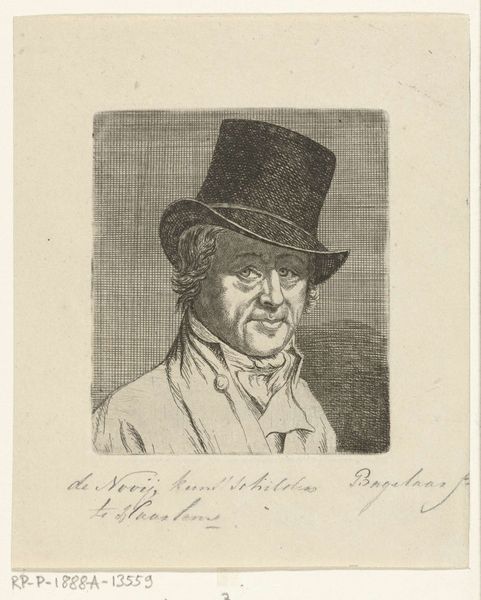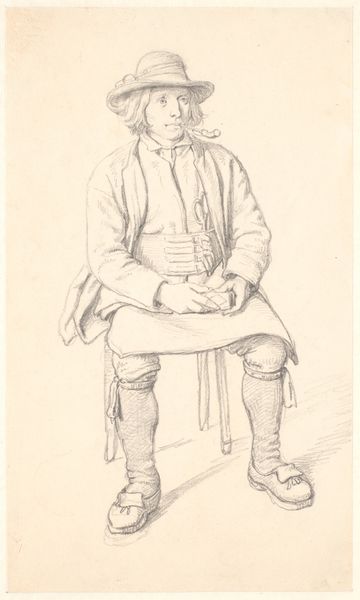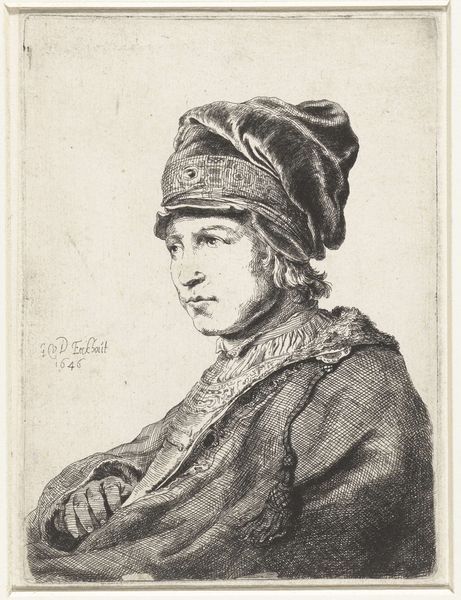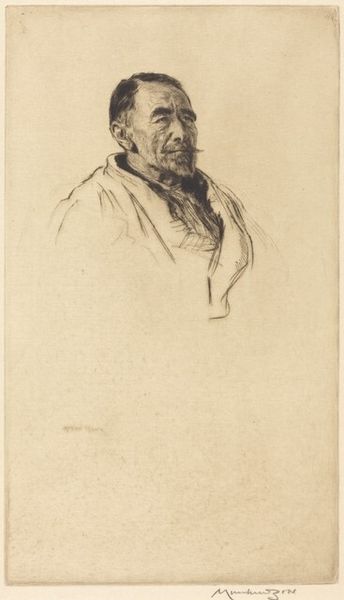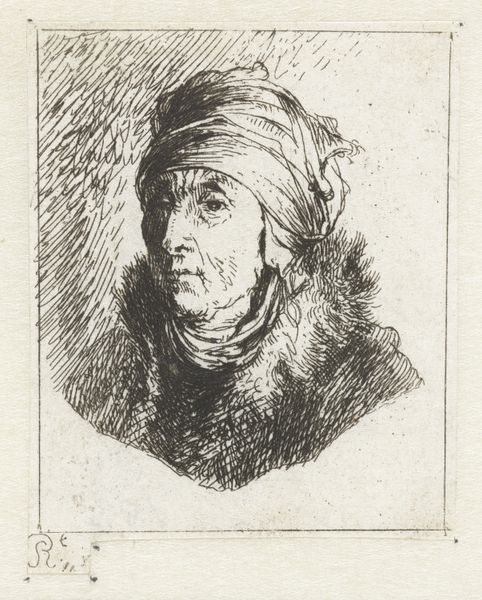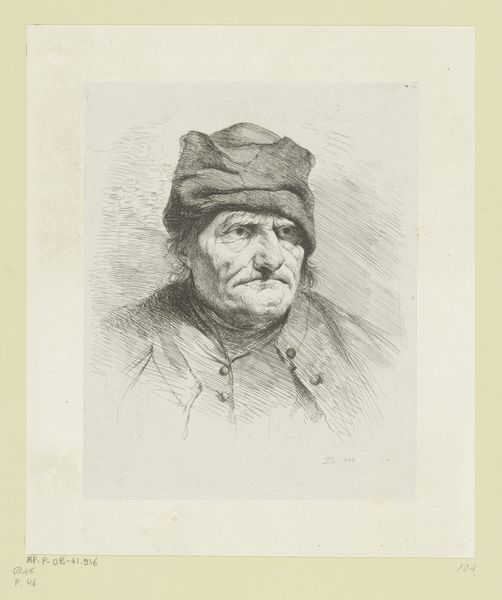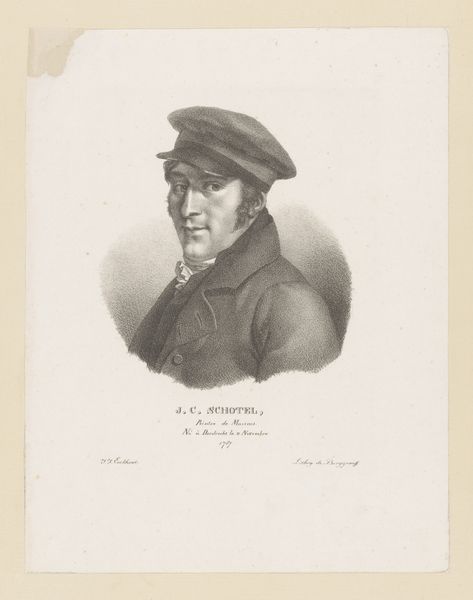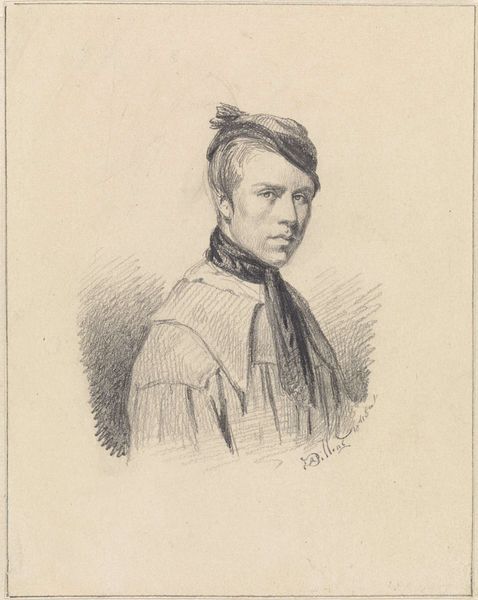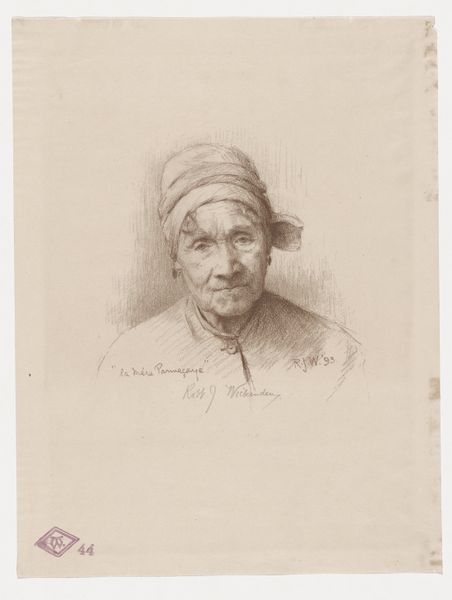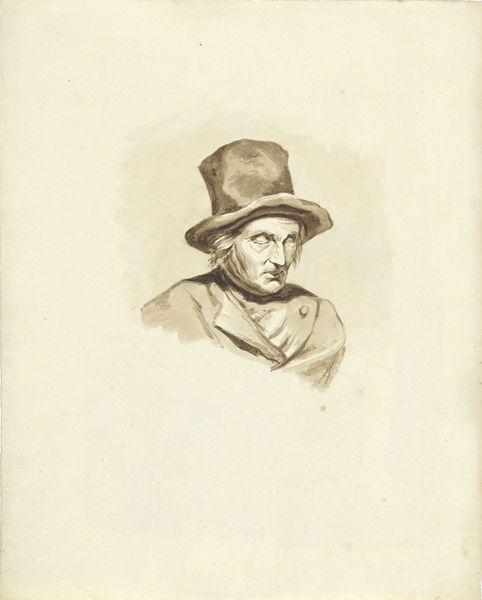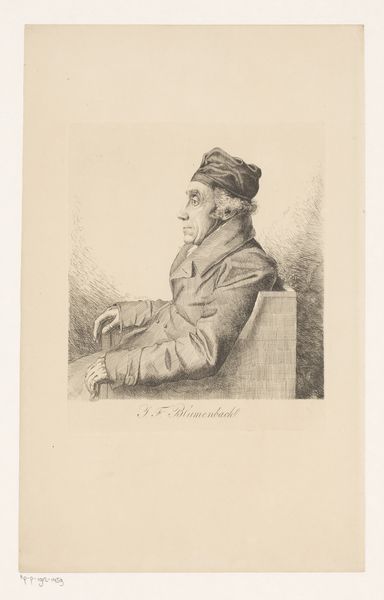
drawing, print, etching
#
portrait
#
drawing
# print
#
etching
#
realism
Dimensions: width 215 mm, height 275 mm
Copyright: Rijks Museum: Open Domain
Curator: This is an etching from 1852 by Jacobus Ludovicus Cornet. It's titled "Portret van Koevoet Le Flamand," currently held at the Rijksmuseum. What strikes you first about it? Editor: There's a fragility to it. It's like a memory fading on paper, all delicate lines and shadows. A very poignant mood. What exactly is the etching process in creating a piece like this? Curator: Well, an etching is an printmaking technique where a metal plate is covered with a waxy ground. The artist then scratches an image into that ground, exposing the metal. The plate is then dipped in acid, which bites into the exposed lines, creating grooves. Ink is applied, the surface wiped clean, and the print is made from the ink held in those etched lines. The paper, the ink, the artist's tools—each of these components played a vital role. This print aesthetic often mirrors social shifts that affect the materials available at the time and also who consumes them. Editor: The realism is intense; it feels like Cornet didn't idealize his subject at all. He captured him with what feels like absolute honesty. There's weariness in his eyes, in the lines etched deeply in his face, history literally etched on skin. What’s going on with what he’s wearing here? Is that...farm equipment attached to his back? Curator: Yes, his distinctive, somewhat unusual dress makes him such an interesting character. Koevoet Le Flamand appears to have been some sort of agricultural worker or peasant figure, and it seems Cornet wanted to really preserve the real-life and social position. The choice of medium and how that lends itself to this sort of realist portrayal only emphasizes the artwork’s importance, doesn't it? Editor: Absolutely. It reminds me that even the most humble lives leave marks on the world, that their stories are worth telling and preserving. This artwork serves not just as a portrayal, but as an invitation to ponder the worth and dignity inherent in human lives often overlooked. Curator: Exactly, we begin to think about value beyond commodity.
Comments
No comments
Be the first to comment and join the conversation on the ultimate creative platform.
